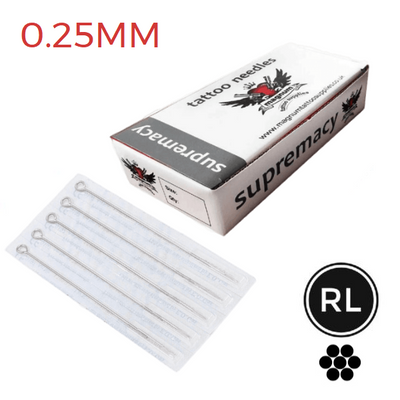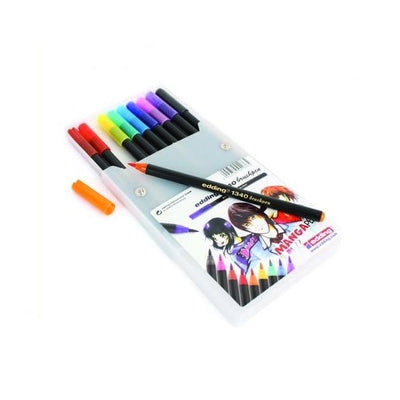When it comes to scar tattooing, scarred skin presents unique challenges that require careful consideration.
Many individuals see tattoos as a way to reclaim areas marked by scars, transforming them into art. However, without the right approach, tattooing over scarred tissue can lead to complications ranging from poor ink absorption to heightened pain and even further scarring.
Ensuring both safety and the desired aesthetic quality calls for a deep understanding of best practices tailored specifically for scarred skin. This is essential for achieving visually stunning results and maintaining skin health and client satisfaction.
What is scarred skin?

Scarred skin is the result of the body's natural healing process following an injury to the skin. When the dermis (the second layer of skin) is damaged, the body forms new collagen fibres to mend the damage, resulting in a scar. This new tissue will have a different texture and quality than the surrounding, uninjured skin.
Types of scars include:
- Keloid scars: Thick, puckered, itchy clusters of scar tissue that grow beyond the edges of the wound or incision. Keloid scar is often red or darker than the surrounding skin.
- Hypertrophic scars: Raised scars that stay within the boundaries of the original injury. They may decrease in size over time.
- Atrophic scars: Sunken or pitted scars that occur when underlying structures supporting the skin, such as fat or muscle, are lost. These scars are common with conditions like acne.
- Contracture scars: These scars result from burns and can tighten skin, potentially impairing the ability to move. These scars can go deeper, affecting muscles and nerves.
- Surgical scars: These result from surgical incisions in the skin and vary widely in size and shape depending on the surgical procedure and healing response.
Differences between scarred and unscarred skin involve:
- Texture: Scarred skin is often thicker and less flexible. Unscarred skin retains its original, smooth, and flexible texture.
- Sensitivity: Scarred skin can be more sensitive or less sensitive to touch than normal skin, depending on the type of scar and individual healing processes.
- Healing: Scarred skin has been healing, altering its original structure and function. It usually does not have the same capacity for further repair or resilience as unscarred skin, making it more susceptible to damage under stress.
How to prepare for a tattoo on scarred skin

Preparing to tattoo over scarred skin requires special consideration and techniques to ensure the best possible outcome. Here are some key points to keep in mind:
Assess the scar:
Before anything, thoroughly assess the scar's age, texture, and sensitivity. Tattoos should generally only be applied to scars that are fully healed and stable, which often means waiting at least one to two years after the scar has formed.
Consult with the client:
Have an in-depth consultation with your client to understand their expectations and discuss the viability of tattooing over their scar. Explain how scar tissue might react differently than normal skin and set realistic expectations about the results.
Skin test:
Consider doing a small patch test on the scarred area to see how the skin takes the ink. Scar tissue can absorb ink more unpredictably than unscarred skin, so it's wise to see how it heals before proceeding with a larger design.
Adjust your technique:
- Needle selection: Choose the right needle configuration. Scar tissue is tougher and less elastic than normal skin, so finer needles might be necessary to achieve the same level of detail without causing additional trauma.
- Ink application: Apply ink more slowly and with lighter pressure than usual. Scar tissue may not take ink as uniformly as unscarred skin, requiring multiple passes to achieve an even colour saturation.
- Depth and speed: Adjust the depth and speed of the needle. Scars might require shallower or deeper needle penetrations depending on their density and location.
Ink choice and colour:
Some ink colours might not show as vibrantly on scarred skin, which can also vary in texture and colouration. You might need to adapt the colour palette or ink density accordingly to ensure the tattoo looks uniform and vibrant.
Post-tattoo care:
Provide your client with detailed tattoo aftercare instructions. Scarred skin may require more delicate handling to prevent any adverse reactions during the healing process. Ensure your client understands the importance of keeping the area clean and moisturised.
Follow-up:
Schedule a follow-up appointment to check on the healing process and make any necessary touch-ups. This is especially important for tattoos on scarred skin, as the healing can be less predictable.
Design considerations

When tattooing over scarred skin, the artist must carefully consider the design to effectively integrate or cover the scar. The design should respect the scar's texture and location, adapting to its unique challenges. It's important to choose a design that either artistically incorporates the scar into the artwork or uses clever patterning to mask it.
Choosing effective designs
Incorporation vs. coverage
- Incorporation: Involves using the scar as a part of the design itself. For example, transforming a linear scar into a tree branch, river, or lightning bolt can turn a blemish into a feature.
- Coverage: Focuses on selecting designs that mask the scar, such as dense, intricate patterns like florals, tribal motifs, or mandalas. These patterns can help distract from the scar and provide uniformity.
Flow and symmetry
The tattoo should flow naturally with the body's contours and the specific shape of the scar. Symmetrical designs may need to be avoided if the scar disrupts the body's natural symmetry; instead, asymmetrical designs can be adapted to better blend with the scar's irregularities.
Complexity and detail
It's advisable to use bold lines and clear shapes because fine details can be lost in scar tissue. Overly intricate designs might not translate well onto uneven or textured skin, making simpler, more defined imagery more effective.
Theme and imagery
Choosing themes that resonate personally with the client can be particularly powerful, especially if the scar has significant emotional or historical importance. Organic shapes and patterns, like leaves, water flows, or smoke swirls, can naturally adapt to the contours and texture of a scar.
Use of colours and shading techniques
Colour selection
- Darker colours: Provide better coverage over scar tissue and are likely to age well on scarred skin.
- Contrast: Using contrasting colours can help draw attention away from the texture of the scar.
- Colour matching: Attempting to match the surrounding skin tones can help integrate the scar more seamlessly into the design.
Shading techniques
- Gradient shading: Creates a smooth transition between scarred and unscarred skin, softening the appearance of the scar.
- Soft shading: Helps in reducing the visibility of raised or indented scars.
- Stippling: Adds texture and depth, which can mask uneven surfaces effectively.
Layering and Depth
Utilising different layering techniques and shadowing can create a sense of depth in the tattoo, helping to divert attention from the scar's texture. Light and dark contrasts can add dimension and focus the viewer's attention away from the scar.
Common challenges faced during the tattooing process on scarred skin
Uneven texture:
Scar tissue often has a different texture compared to the surrounding skin. It can be raised, indented, or uneven, which makes it difficult for the tattoo needle to deposit ink uniformly.
Ink retention:
Scar tissue may not retain ink as well as normal skin, leading to patchy or inconsistent colouring. The ink might spread unevenly or appear lighter in some areas.
Increased sensitivity:
Scarred skin can be more sensitive than normal skin, leading to increased pain during the tattooing process. This might require more frequent breaks or a slower process.
Difficulty in healing:
Scar tissue generally heals differently, which can affect how the tattoo heals. The healing process might be slower, and there is a higher risk of complications such as infection or the ink not settling properly.
Risk of further scarring:
Tattooing over scarred skin can sometimes cause further trauma to the skin, potentially leading to additional scarring.
Limited tattoo placement:
Depending on the location and type of scar, there may be limited areas where the tattoo can be placed effectively.
Colour challenges:
The colour of the scar may be different from the surrounding skin (e.g., lighter, darker, or more red), which can affect how the tattoo colours appear once healed.
Limitations in design and technique due to the nature of different scars
- Complex designs may not translate well onto scar tissue; simpler designs are often preferred.
- Adjustments in needle depth, pressure, and speed may be necessary.
- Fine lines may blur or distort; bold lines or shading are often used instead.
- Choosing colours that contrast with the scar to ensure visibility.
- Managing expectations as the final result may differ from tattoos on regular skin.
- Strategic placement of scar tattoos to align with the natural lines and shape of the scar.
Final thoughts
Tattooing on scarred skin demands careful attention to safety and quality. Tattoo artist must understand the intricacies of scar tissue, including variations in natural skin colour and texture and employ specific techniques to ensure successful results.
By focusing on thorough preparation, using the right materials, and providing detailed aftercare, artists can safely transform scars into artwork, helping clients express themselves and heal aesthetically.



























































 Studio supplies
Studio supplies












 Power & batteries
Power & batteries








 Aftercare
Aftercare





















 Apprentice
Apprentice


 Piercing & jewellery
Piercing & jewellery







 PMU supplies
PMU supplies




 New arrivals
New arrivals
 Gift vouchers
Gift vouchers
 Shop all
Shop all















































